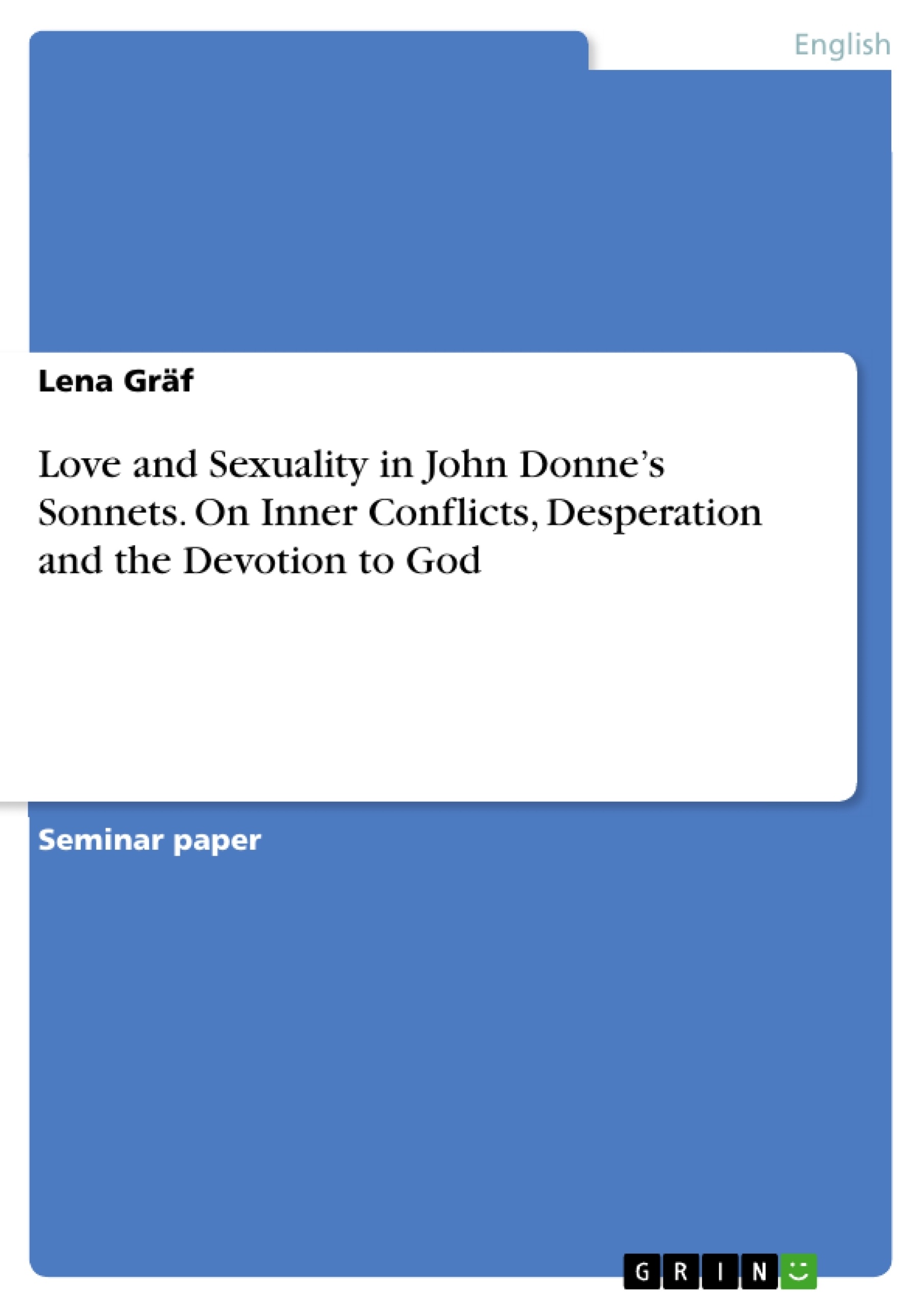One thing that matters quite a lot in Donne’s sonnets is that he was, on the one hand, “a very masculine lover of women”, on the other hand “a very devout lover of God” (cf. Edwards 6). He was constantly torn between sexual love and the love to God. This is why this term paper will also briefly explain what love and sexuality in the Renaissance were like.
This might help to understand some of Donne’s motives. After that the sonnet will look at two of the Holy Sonnets in-depth and try to find out why he used the sexual imagery. Does it have a certain purpose or is Donne just that much into sexuality and love? One could actually claim that, even if most of the Holy Sonnets were written after his ordination in 1615, Donne probably used them to process that he keeps on being torn between sex and God – sometimes subliminal, sometimes more explicit. That is why the sonnets on hand, the fourteenth and the eighteenth, definitely combine both by using imagery and a certain choice of words.
Table of Contents
1. Introduction
2. Love and Sexuality in the Renaissance
3. Analysis
3.1 Batter my heart, three-personed God
3.2 Show me dear Christ, thy spouse
4. Conclusion
5. Works Cited
- Quote paper
- Lena Gräf (Author), 2016, Love and Sexuality in John Donne’s Sonnets. On Inner Conflicts, Desperation and the Devotion to God, Munich, GRIN Verlag, https://www.grin.com/document/423484
-

-

-

-
Upload your own papers! Earn money and win an iPhone X. -

-
Upload your own papers! Earn money and win an iPhone X. -

-
Upload your own papers! Earn money and win an iPhone X. -

-
Upload your own papers! Earn money and win an iPhone X. -

-
Upload your own papers! Earn money and win an iPhone X. -

-
Upload your own papers! Earn money and win an iPhone X. -

-
Upload your own papers! Earn money and win an iPhone X.

